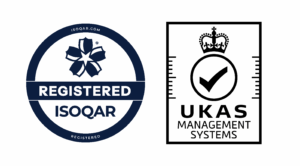Black Friday: Optimal sales phenomenon or collective retail suicide?
It’s time to put aside that leftover Halloween candy and pumpkin spice lattes to instead focus on the familiar ritual – worrying over whether this shopping season will deliver good tidings and cheery returns or show retail sales figures to be second-rate, coal filled stockings.
With Black Friday and Cyber Monday less than three weeks away, many retailers will be excused for feeling more frantic than festive when this retail revolution – accounting for as much as 30 percent of annual sales – hopefully makes up for what has been one of the toughest years for retail. As bargain-hunters wait in anticipation of discounts ready to be unleashed on the high street, British shoppers and retailers however are shunning the often-chaotic scenes witnessed across America during this event, by increasingly focussing their efforts online.
In fact, Britain is now the biggest online shopping nation in the developed world, with almost two thirds of adults using the internet to buy goods or services, according to IMRG, a body which represents the UK’s online retailers. The first half of 2018 alone, saw online retail accounting for more than 20% of retail sales, growing at ten times the rate of store sales.
**Trading trolleys for home delivery**
Black Friday Weekend 2017 didn’t disappoint when Brits showed their appreciation of the benefits of online shopping – not having to brave the weather, crowds or queues – by spending nearly £6.3 billion from the comfort of their own sofas.
It’s clear that the consumer is in control, enabled through technology to remain constantly connected and more empowered than ever before to drive changes in shopping behaviour in both the ‘bricks and mortar’ and online retail landscape. And while 2018 is turning out to be an eventful year in UK retail with headlines describing the sector to be in turmoil, is retail really in trouble, or is it transforming?
**What was once the ‘Golden Quarter’ has become a bargain hunter’s dream.**
More voices this year has been raised saying the Black Friday is collective suicide for the industry. In the past few years shoppers have seen no need to go shopping if they might get things cheaper the following week. In turn, to remain competitive and attract footfall, retailers promoted and prolonged the discount holiday shopping season driving down prices. By the time that Boxing Day dawned, there was so much discounting that shoppers showed ‘discount fatigue’ with results showing the main growth of sales had been online. In fact, a new report by GBH Insights shows Amazon dominating Black Friday sales in 2017 with the company claiming between 45% and 50% of all online Black Friday sales.
However, it’s certainly not all rosy for online retailers. According to a study by LCP Consulting the price retailers pay for online growth is significant. Black Friday is magnifying challenges across the retail sector such as consumers wanting to browse in-store, order online, have it delivered and picking up their order from a convenient collection point. They might return the item to the store, and when they do, pick up an alternative ordered via a mobile app. At each step they expect retailers to know who they are and what their recent interactions with the brand have been. Online sales figures might seem like a dream but LCP logistics consultancy reports that e-tailers are expected to be lumbered with £2.5bn worth of unwanted presents over the Christmas period, which could be a customer support nightmare.
**Christmas hangover for the high street?**
Despite sales in physical stores falling by 2.5%, the high street is far from dead, it is evolving. Not all consumers are ditching the trip to the shops. And emptier aisles don’t translate to less tension placed on the customer service department, customer contact channels or contact centre agents dealing with the busiest shopping weekend of the year. Some of the nation’s biggest shopping websites struggled to cope with the volume of online interactions, with John Lewis, Argos, Boots, Tesco and Game all crashing or suffering slow loading pages last year, so starting sales early this year should help prevent the same thing happening.
These retailers have proved the importance of adjusting your ‘brick and clicks’ strategy to allow consumers to browse, buy or self-serve using the most convenient channel for them, right up to the last-minute dash. They understand that customer experience can change the attitude of customers towards their favourite brands, so it’s of utmost importance to deliver the same levels of customer service during peak shopping season to that of quieter periods.
It’s unbelievable however, that some retailers are still caught off-guard, unprepared for the escalation of customer interactions during this busy period and last-minute shoppers still expecting exceptional service.
Many businesses will employ more staff in the lead up to Christmas as part of their customer service strategy. However, as many newbies will not have the same knowledge about products, refund or exchange procedures, like permanent staff, a clear multi-channel strategy is required to maintain high levels of customer experience. Deploying AI-powered online customer service software to ensure right, consistent answers are delivered to customers regardless of channel, and to assist temporary and permanent contact centre staff, could be the competitive advantage to provide the high levels of customer support needed.
**The future of the UK retail industry**
There is no way of knowing precisely how 2018 will play out for the UK’s retail sector as we face the uncertain consequences of the decision to leave the European Union.
However, the key takeaway for brands and retailers reading the consumer tea leaves this year is the need to embrace change. Physical retail is not dead. Boring retail is. Consumers are confident, and they are planning to spend. To exploit return, brands and retailers must be prepared to think differently and pro-actively support new consumer standards around when, where and how their key audiences plan to shop this holiday season.
**How will you transform your business with customers, competition and culture always changing?**
Christmas might just have come early.
Could we be in your 2019 budget? Why not [**trial our digital customer engagement tools free for up to 60 days?**](https://synthetix.com/do-you-qualify)
**Further reading:**
The gift that keeps on giving, the page turner that is ‘Multi-Channel Online Customer Service For Dummies’
* Understand the challenges delivering effective online service creates
* Get an overview of the tools available to meet those challenges
* Discover the must-haves you need for effective implementation

